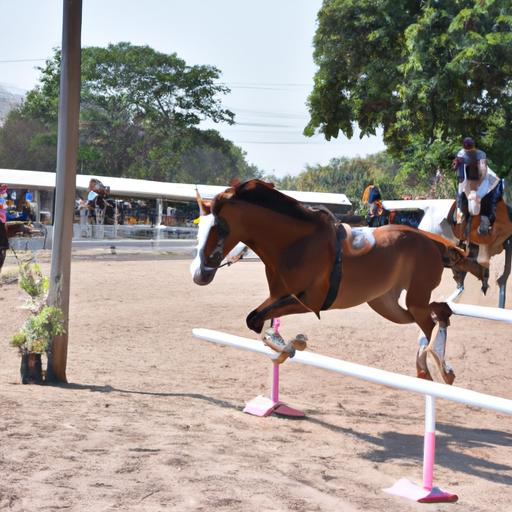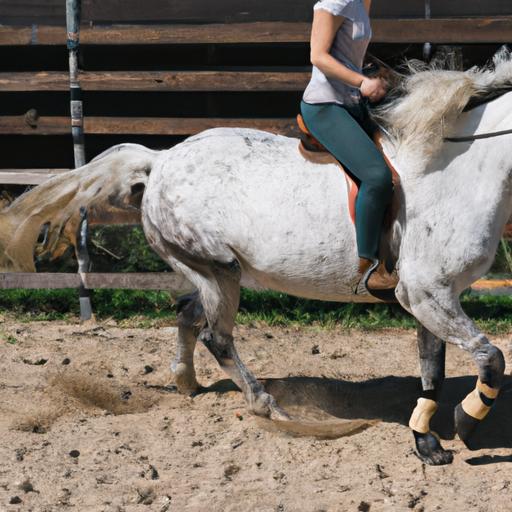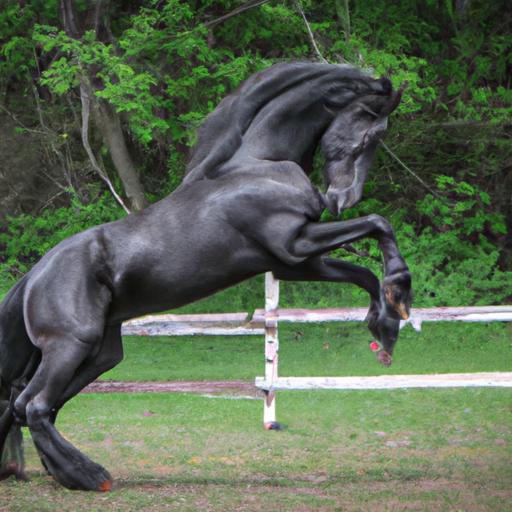Unleash the true potential of your equine partner with vengeance horse training. Discover methods, techniques, and tips for transformative results.
Introduction

As equestrians, we understand the profound bond that exists between horse and rider. We strive to unlock the full potential of our equine companions, shaping them into graceful and obedient partners. One method that has gained traction in recent years is vengeance horse training. In this article, we will dive deep into the world of vengeance horse training, exploring its nuances and uncovering the secrets to success.
A. Overview of Vengeance Horse Training

Vengeance horse training is a specialized approach that focuses on transforming horses with challenging behaviors into well-mannered and cooperative individuals. It is an advanced training technique that requires patience, understanding, and skill. By leveraging a combination of trust-building exercises, positive reinforcement, and clear communication, trainers can guide their horses towards remarkable transformations.
B. Importance of Effective Horse Training Techniques

In the realm of horse training, the significance of employing effective techniques cannot be overstated. A well-trained horse is not only a joy to work with but also crucial for the safety and success of both horse and rider. Vengeance horse training, when executed with expertise, has the potential to turn seemingly unmanageable horses into reliable partners, capable of excelling in various disciplines.
C. Introducing the Concept of SEO Optimization for Horse Training Articles
Now, you might wonder, what does SEO optimization have to do with horse training? Well, my friend, in today’s digital age, the internet has become a vast repository of equestrian knowledge. As trainers and enthusiasts, we need to ensure our valuable insights reach the right audience. By incorporating SEO techniques into our articles, we can enhance the visibility and reach of our expertise, helping fellow horse lovers find the guidance they seek.
So, saddle up and get ready to embark on a journey into the world of vengeance horse training. Together, we will unravel the secrets, explore the methods, and equip you with the tools to transform even the most challenging equine souls into willing companions. Let’s dive into the depths of this fascinating training approach and unleash the true potential of both horse and rider.
Stay tuned for the next section, where we will delve into the intricacies of vengeance horse training methods, and discover how to choose the right techniques for your equine partner.
Understanding Vengeance Horse Training
A. Definition and Purpose of Vengeance Horse Training
Vengeance horse training is a specialized approach aimed at transforming horses with challenging behaviors, such as aggression, fear, or resistance, into well-behaved and cooperative partners. Unlike traditional training methods that focus on dominance, vengeance horse training emphasizes understanding and empathy. It seeks to address the underlying causes of problematic behavior and establish a harmonious relationship between horse and rider.
B. Key Principles and Methods Involved in Vengeance Horse Training
-
Trust-Building: Vengeance horse training begins with building a foundation of trust between horse and handler. This involves creating a safe and nurturing environment where the horse feels secure and respected.
-
Positive Reinforcement: Rather than relying on punishment or force, vengeance horse training centers around positive reinforcement. By rewarding desired behaviors, whether it is through treats, praise, or release of pressure, horses learn to associate these actions with positive outcomes.
-
Clear Communication: Effective communication is crucial in vengeance horse training. Trainers must develop a deep understanding of equine body language and employ clear and consistent cues to convey their expectations to the horse.
-
Gradual Progression: Vengeance horse training is a gradual process that allows horses to learn at their own pace. Trainers break down complex tasks into smaller, achievable steps, gradually building upon their skills and confidence.
C. Benefits and Potential Challenges of Vengeance Horse Training
Vengeance horse training offers numerous benefits, both for the horse and the rider. By addressing problematic behaviors, horses become more responsive, cooperative, and willing partners. This training approach fosters a deep bond of trust and respect, laying the groundwork for a harmonious partnership.
However, it’s essential to recognize that vengeance horse training is not without its challenges. Each horse is unique, and their response to training methods can vary. Patience, consistency, and adaptability are key when dealing with challenging behaviors. Trainers must also be aware of their own limitations and seek professional guidance if necessary.
In the next section, we will explore the different methods available for vengeance horse training, helping you choose the most suitable techniques for your equine companion. So, let’s continue our journey towards mastering the art of transformative equine education!
Choosing the Right Vengeance Horse Training Methods
When it comes to vengeance horse training, selecting the right methods is paramount to ensuring success and building a strong foundation for your equine partner. Let’s explore the essential factors to consider and the steps you can take to ensure the safety and well-being of your horse throughout the training process.
A. Evaluating Different Training Methods for Vengeance Horse Training
As with any training approach, vengeance horse training encompasses various methods and techniques. It’s crucial to evaluate these methods carefully to determine which ones align with your horse’s unique temperament and behavioral challenges. Consider the following:
-
Positive Reinforcement: This method emphasizes rewarding desired behaviors, encouraging your horse to repeat them. It fosters a positive learning environment, building trust and cooperation between you and your equine companion.
-
Trust-Building Exercises: These exercises focus on developing a strong bond with your horse. Techniques such as groundwork, desensitization, and liberty training can help establish mutual trust and respect.
-
Clear Communication: Effective communication lies at the heart of successful training. Techniques like clicker training and natural horsemanship methods enhance communication, allowing you to convey your expectations clearly.
B. Factors to Consider When Selecting the Appropriate Training Techniques
When choosing the appropriate training techniques for vengeance horse training, it’s essential to consider several factors to ensure a positive and productive experience:
-
Horse’s Personality and Learning Style: Every horse is unique, with different personalities and learning preferences. Tailor your training methods to suit your horse’s individual needs, adapting your approach to their temperament and cognitive abilities.
-
Training Goals: Define your training objectives clearly. Whether you aim to correct specific behavioral issues or develop advanced skills, align your training methods with your goals to achieve the desired results.
-
Expert Guidance: Seek guidance from experienced trainers or professionals who specialize in vengeance horse training. Their expertise and insights can help you navigate the training process more effectively and address any challenges that may arise.
C. Ensuring the Safety and Well-being of the Horse During Training
As responsible equestrians, it is crucial to prioritize the safety and well-being of our equine partners during the training process. Take the following precautions to ensure a safe and positive experience:
-
Proper Equipment and Facilities: Ensure you have the appropriate equipment and a suitable training environment that promotes safety and minimizes potential hazards.
-
Gradual Progression: Progress gradually through the training exercises, allowing your horse to adjust and build confidence at each stage. Avoid rushing or overwhelming your horse, as it may lead to stress or resistance.
-
Regular Breaks and Evaluation: Schedule regular breaks during training sessions to allow your horse to rest and process the information. Continuously evaluate your horse’s physical and emotional state to address any signs of discomfort or stress promptly.
By carefully evaluating different training methods, considering relevant factors, and prioritizing the safety and well-being of your horse, you can embark on a vengeance horse training journey that sets both you and your equine partner up for success.
Next, in Section 4, we will provide a step-by-step guide to vengeance horse training, unveiling the fundamental building blocks and exercises necessary to establish a strong foundation. Stay tuned!
Step-by-Step Guide to Vengeance Horse Training
Becoming a master of vengeance horse training requires a systematic approach and a well-thought-out plan. Here is a step-by-step guide to help you navigate through the intricacies of this transformative training method.
A. Establishing a Strong Foundation for Successful Training
Before diving into vengeance horse training, it is crucial to establish a solid foundation of trust and respect with your equine partner. Take the time to build a strong bond through groundwork exercises, such as lunging, desensitization, and liberty work. This foundation sets the stage for a successful training journey, creating a harmonious connection between you and your horse.
B. Introducing Basic Commands and Cues for Vengeance Horse Training
Once the foundation is in place, it’s time to introduce basic commands and cues that will form the building blocks of your training sessions. Teach your horse to respond to verbal cues, body language, and rein aids. Start with simple tasks like halting, backing up, and turning, gradually increasing the difficulty as your horse becomes more responsive and confident.
C. Gradually Progressing to More Advanced Training Exercises
As your horse gains proficiency in the basic commands, it’s time to challenge them with more advanced exercises. Introduce lateral movements such as leg yields, shoulder-in, and haunches-in. Incorporate obstacles and patterns to enhance their agility and problem-solving abilities. Remember to always reward their efforts and maintain a positive training atmosphere.
The key to successful vengeance horse training lies in consistency, patience, and clear communication. Each step builds upon the previous one, creating a solid framework for your horse’s progress. Keep in mind that every horse is unique, and the timeline for progression may vary. Listen to your horse’s feedback and adjust your training approach accordingly.
In the next section, we will explore common mistakes to avoid during vengeance horse training. By understanding these pitfalls, you can steer clear of setbacks and ensure a smooth training journey for both you and your equine partner.
Common Mistakes to Avoid in Vengeance Horse Training
A. Identifying and Addressing Common Training Errors
In the pursuit of vengeance horse training, it’s essential to be aware of the common mistakes that can hinder progress. By recognizing and rectifying these errors, we can ensure a smoother and more effective training journey. One common mistake is inconsistency in training methods and cues. Horses thrive on consistency, so it’s crucial to establish clear and consistent cues from the start. Inconsistency can confuse the horse and hinder their learning progress.
Another mistake to avoid is using excessive force or punishment. While it’s natural to feel frustrated when faced with challenging behaviors, resorting to harsh training methods can have detrimental effects on the horse’s trust and willingness to learn. Instead, focus on positive reinforcement and reward-based training techniques to foster a positive and cooperative learning environment.
B. Tips for Troubleshooting Challenges During the Training Process
During the course of vengeance horse training, you may encounter various challenges that require troubleshooting. One common challenge is resistance from the horse, displayed through behaviors such as bucking or rearing. When faced with resistance, it’s important to remain calm and patient. Analyze the situation and try to identify the root cause of the resistance, whether it’s fear, discomfort, or confusion. Addressing the underlying issue can help overcome the challenge and move forward in the training process.
Another challenge is maintaining focus and engagement from the horse. Horses, like humans, can become bored or distracted during training sessions. To combat this, incorporate variety into your training routine. Introduce new exercises, change the training environment, or include short breaks to keep the horse mentally stimulated and engaged.
C. Importance of Consistency, Patience, and Positive Reinforcement in Training
Consistency, patience, and positive reinforcement are the pillars of successful vengeance horse training. Consistency ensures that the horse understands and retains the training cues, leading to faster and more reliable responses. It’s essential to maintain consistency not only in the training techniques but also in your interactions with the horse.
Patience is a virtue that cannot be overlooked. Horses, especially those undergoing vengeance training, may require more time to grasp new concepts and overcome challenging behaviors. Be patient and allow the horse to progress at their own pace, celebrating even small victories along the way.
Finally, positive reinforcement is a powerful tool in building a strong bond with your horse. Reward desired behaviors promptly and generously, whether through treats, praise, or a gentle pat on the neck. Positive reinforcement encourages the horse to repeat the desired behavior, creating a harmonious training partnership.
By avoiding common training mistakes, troubleshooting challenges with patience and creativity, and employing consistency, patience, and positive reinforcement, you can navigate the journey of vengeance horse training with confidence and success. In the next section, we will provide a step-by-step guide to help you establish a solid foundation for effective vengeance horse training.


